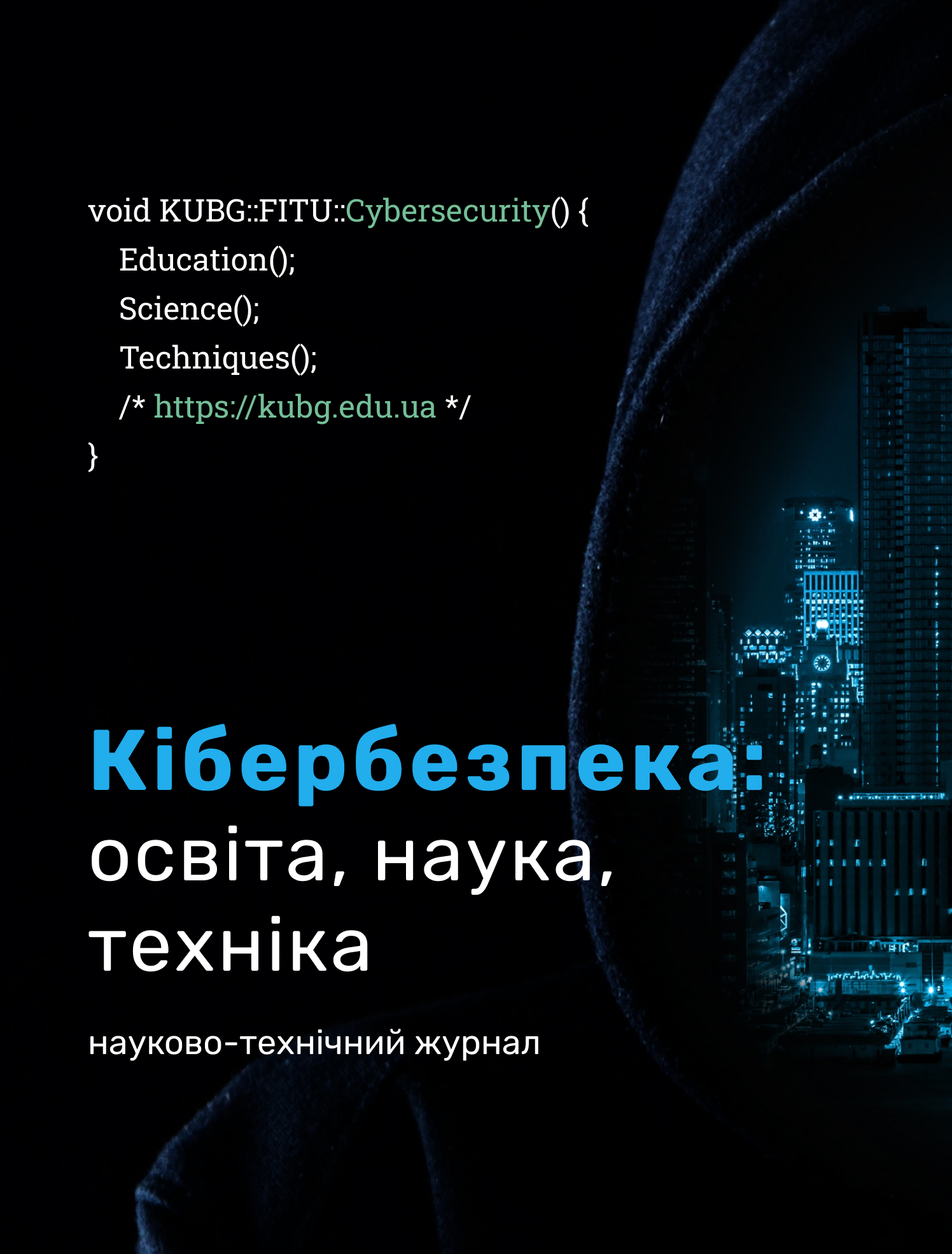ADAPTATION OF THE KURAMOTO MODEL FOR THE ANALYSIS OF THE DISTRIBUTION OF INFORMATION IN SOCIAL NETWORKS
DOI:
https://doi.org/10.28925/2663-4023.2023.21.309314Keywords:
Kuramoto model; dissemination of information; social networks; synchronization; heterogeneous networks; information flows; dynamic systems.Abstract
The article proposes an approach to modification of the Kutemoto model, which allows it to be used to analyze the dissemination of information on social networks, which, in turn, provides an opportunity to study such phenomena as consensus formation when groups of users converge in common opinion, dissemination of innovation and public formation thoughts on a certain reason. The simplified and classic approaches to modeling interactions between users are presented, where oscillators symbolize individual participants, and their frequencies - the current state of information. The frequency can display the initial opinion of the user, when the closer frequencies of the two users, the closer their initial views, and the tendency to change the thought, when the greater the amplitude of oscillations, the more the user is inclined to change his opinion under the influence of others. The main parameters of the model are the communication force (how much one user affects another), the frequency of natural vibrations (the user's initial opinion), noise (random factors that can influence the user's opinion).The advantages of each model for different networking scenarios are highlighted.The classic model used to describe synchronization in dynamic systems is used to study the interaction between social network users. The modified model takes into account the individual properties of users, their pace of information dissemination and the nature of interaction with other network participants. For more accurate modeling of social processes, the model of the Krankmoto can be expanded by taking into account the heterogeneity of users, as different users may have different tendency to influence and different number of connections, introduction of dynamic connections, since the structure of the social network may change over time, and take into account the heterogeneity information in the context of its impact on users.
Downloads
References
Chernii, P. (2017). Models of message distribution in online social networks: properties, structure, features of application. Bulletin of Kharkiv National University named after V.N. Karazin, 127–134.
Acebrón, J. A., Bonilla, L. L., Pérez Vicente, C. J., Ritort, F., & Spigler, R. (2005). The Kuramoto model: A simple paradigm for synchronization phenomena. Reviews of Modern Physics, 77(1), 137–185. https://doi.org/10.1103/revmodphys.77.137
Anakhov, P., Zhebka, V., Korshun, N., Tushych, A., & Dovzhenko, T. (2021). Stability method of connectivity automated calculation for heterogeneous telecommunication network. In: Cybersecurity Providing in Information and Telecommunication Systems, vol. 3188, 282–287.
Grechaninov, V., Hulak, H., Sokolov, V., Skladannyi, P., & Korshun, N. (2021). Formation of dependability and cyber protection model in information systems of situational center. In: Emerging Technology Trends on the Smart Industry and the Internet of Things, vol. 3149, 107–117.
Guille, A., Hacid, H., Favre, C., & Zighed, D. A. (2013). Information diffusion in online social networks. ACM SIGMOD Record, 42(2), 17–28. https://doi.org/10.1145/2503792.2503797
Ishfaq, U., Khan, H. U., & Iqbal, S. (2022). Identifying the influential nodes in complex social networks using centrality-based approach. Journal of King Saud University - Computer and Information Sciences. https://doi.org/10.1016/j.jksuci.2022.09.016
Kumar, P., & Sinha, A. (2021). Information diffusion modeling and analysis for socially interacting networks. Social Network Analysis and Mining, 11(1). https://doi.org/10.1007/s13278-020-00719-7
Shevchuk, D., Harasymchuk, O., Partyka, A., & Korshun, N. (2023). Designing Secured Services for Authentication, Authorization, and Accounting of Users. In: Cybersecurity Providing in Information and Telecommunication Systems, vol. 3550, 217–225.
Medvedev, G. S., & Tang, X. (2018). The Kuramoto Model on Power Law Graphs: Synchronization and Contrast States. Journal of Nonlinear Science, 30(5), 2405–2427. https://doi.org/10.1007/s00332-018-9489-3
Strogatz, S. H. (2000). From Kuramoto to Crawford: exploring the onset of synchronization in populations of coupled oscillators. Physica D: Nonlinear Phenomena, 143(1–4), 1–20. https://doi.org/10.1016/s0167-2789(00)00094-4
A survey on information diffusion in online social networks: models and methods. (2017). Information, 8(4), 118. https://doi.org/10.3390/info8040118
Published
How to Cite
Issue
Section
License
Copyright (c) 2023 Катерина Дмитрієнко

This work is licensed under a Creative Commons Attribution-NonCommercial-ShareAlike 4.0 International License.




